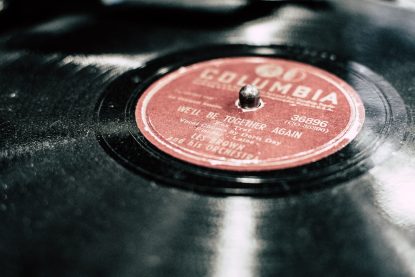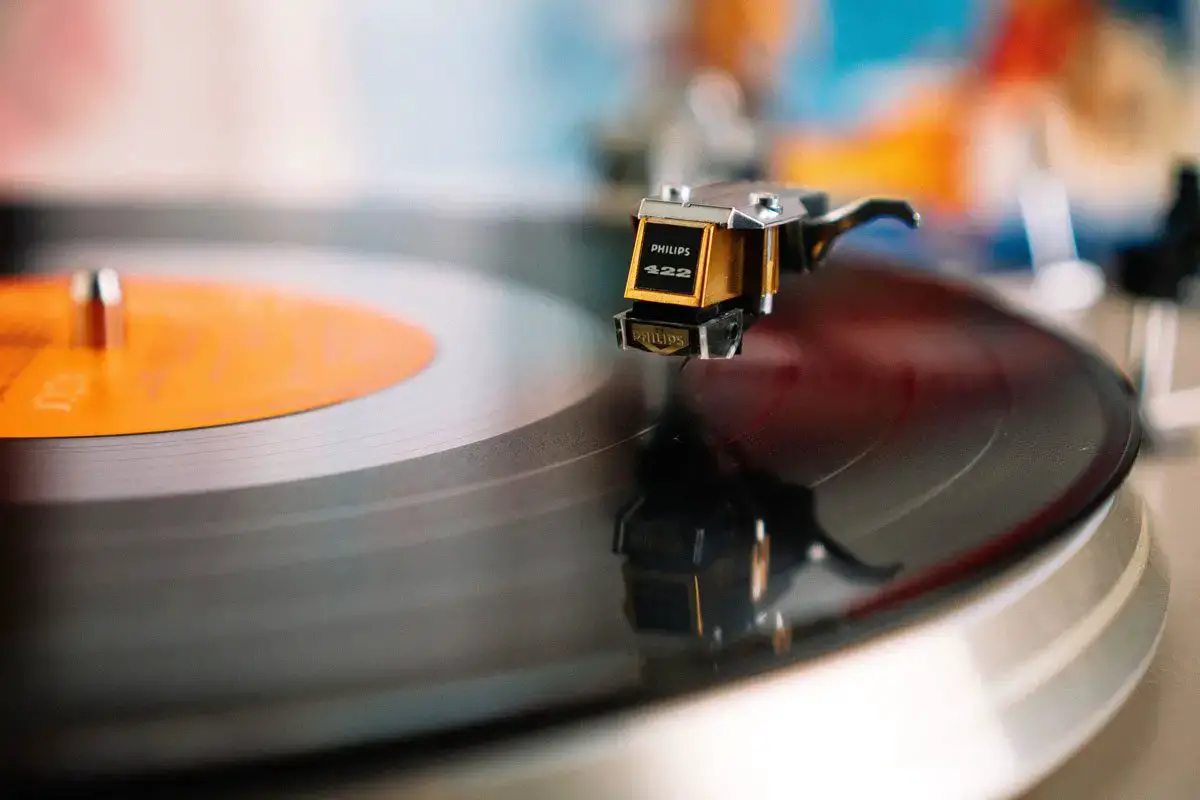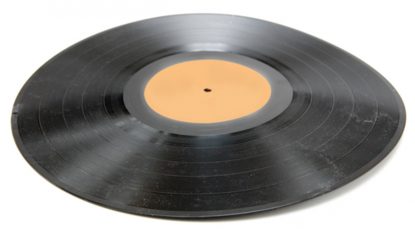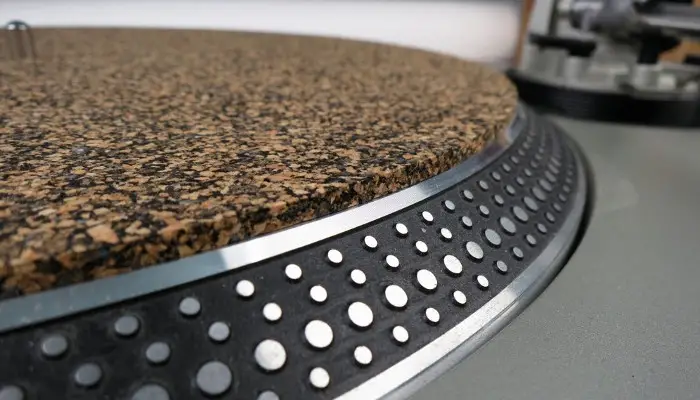How to clean vinyl records
Tips for maintaining your record collection
Vinyl records have been making a comeback in recent years, and for good reason. They offer a unique sound quality that cannot be replicated by digital music along with a beautiful tactile feeling that only vinyl DJ-ing can provide.
However, to ensure that your vinyl records sound their best, it is important to keep them clean. Dust, dirt, and fingerprints can all affect the sound quality of your vinyl.
Cleaning your vinyl records may seem like a daunting task, but it is actually quite simple. There are several methods you can use to clean your records, depending on the level of dirt and grime. For everyday cleaning, a carbon fiber brush can be used to remove surface dust. For a deeper clean, a liquid cleaning solution can be applied to the record and then wiped clean with a microfiber cloth. It is important to avoid using harsh chemicals or abrasive materials, as these can damage the record.
Let’s take a look at all the options to help you clean vinyl records as well as the best method of storing them too.

Vinyl records are a popular way to listen to music, but they require proper maintenance to keep them in good condition. Cleaning your vinyl records regularly is essential to maintain their sound quality and prevent damage. Here are some reasons why you should clean your vinyl records:
 Dust and Dirt
Dust and Dirt
Dust and dirt can accumulate on the surface of your vinyl records, which can cause them to sound distorted and muffled. Regular cleaning can remove this debris, restoring the clarity and quality of the sound.
Static
Static electricity can build up on vinyl records, causing them to attract dust and dirt. This can lead to crackling and popping sounds during playback. Cleaning your records can help reduce static and prevent these unwanted noises.
Cover and Stylus
The cover and stylus of your turntable can also collect dust and dirt. This can cause damage to your records and affect the sound quality. Regular cleaning of your turntable and stylus can prevent this from happening.
Impurities
Vinyl records can also be affected by impurities, such as oils from your hands or other substances. These impurities can cause the record to warp or affect the sound quality. Proper cleaning can help prevent these issues and keep your records in good condition.
Sound Quality
Regular cleaning can help maintain the sound quality of your vinyl records. Over time, dirt and debris can build up on the surface of the record, causing it to sound distorted or muffled. Cleaning the record can help restore its clarity and improve the overall sound quality.

Clicks, Pops, and Crackling
Clicks, pops, and crackling sounds during playback are often caused by dirt and debris on the surface of the record. Regular cleaning can help reduce these unwanted noises and improve the overall sound quality.
 Warping
Warping
Warping can occur when a record is exposed to heat or moisture. This can cause the record to become distorted and affect the sound quality. Proper storage and maintenance, including regular cleaning, can help prevent warping and keep your records in good condition.
Cleaning your vinyl records is essential to maintain their sound quality and prevent damage. Regular cleaning can remove dust, dirt, and impurities, reduce static, and prevent clicks, pops, and crackling sounds during playback. It is important to choose the right products and follow the manufacturer’s instructions for use to ensure the best results.
So let’s look at all the different options available to you to clean your vinyl record collection and make sure they always sound their very best.
When it comes to cleaning vinyl records, it’s important to have the right tools and solutions to get the job done effectively. In this section, we’ll discuss the different cleaning tools and solutions that you can use to keep your records in tip-top shape.
Dry Cleaning
Before you can start wet cleaning your vinyl records, you’ll need to dry clean them first. This involves removing any surface dust and debris using a dry cleaning method. Here are some tools you can use for dry cleaning:
Carbon fibre brush
A carbon fiber brush is a must-have tool for any vinyl collector. It’s designed to remove surface dust and debris from your records without scratching them. Simply run the brush over the surface of the record in a circular motion, and the bristles will pick up any dirt or dust.
Anti-static carbon fibre brush
An anti-static carbon fiber brush is similar to a regular carbon fiber brush, but it has the added benefit of reducing static charge on your records. This can help prevent dust from sticking to the surface of the record.
Stylus cleaner
The stylus is the small needle that sits on the end of your turntable’s tonearm. It’s important to keep this clean, as a dirty stylus can damage your records. Use a stylus cleaner to gently remove any dust or debris from the stylus.
Static gun
If you’re dealing with a lot of static charge on your records, a static gun can be a useful tool. Simply point the gun at the record and pull the trigger to release a burst of static-neutralizing ions.
Wet Cleaning
Once you’ve dry cleaned your records, you can move on to wet cleaning. This involves using a cleaning solution and a microfiber cloth to remove any deeper dirt or grime from the grooves of the record. Here are some tools and solutions you can use for wet cleaning:
Cleaning solution
There are a variety of cleaning solutions available on the market that are specifically designed for cleaning vinyl records. Look for a solution that is alcohol-free and safe for use on vinyl.
Distilled water
If you don’t want to use a commercial cleaning solution, you can use distilled water instead. Simply mix the distilled water with a small amount of isopropyl alcohol to create a cleaning solution.
Record cleaning solution
Some vinyl collectors prefer to use a record cleaning machine, which is a device that uses a cleaning solution and a vacuum to clean your records. These machines can be expensive, but they are very effective at removing dirt and grime from your records.
Cleaning mat
A cleaning mat is a soft, non-abrasive mat that you can place your records on while you clean them. This can help prevent them from getting scratched or damaged during the cleaning process.
Plastic sleeve
Once you’ve cleaned your records, it’s a good idea to store them in a plastic sleeve to protect them from dust and debris. You can also use a protective sleeve to store your records when you’re not listening to them.
Spot clean
If you notice a particularly stubborn spot or stain on your record, you can use a small amount of vinyl cleaning solution and a microfiber towel to spot clean the area. Be careful not to use too much solution, as this can damage the record.
By using the right tools and solutions, you can keep your vinyl records in excellent condition for years to come. Remember to always handle your records with care, and never use household cleaning products or abrasive materials to clean them.
Cleaning vinyl records is an essential part of maintaining their quality and longevity. Here is a step-by-step guide to cleaning vinyl records, including pre-cleaning preparation, dry cleaning process, and wet cleaning process.
Pre-Cleaning Preparation
Before cleaning your vinyl records, you need to prepare the following items:
- Vinyl record cleaning solution
- Soft-bristled brush or applicator
- Microfiber cloth
- Record cleaning machine or turntable
Once you have all the necessary items, you can proceed with the cleaning process.
Dry Cleaning Process
The dry cleaning process involves removing dust and debris from the playing surface of the vinyl record. Here are the steps to follow:
- Place the vinyl record on the turntable.
- Use a soft-bristled brush or applicator to remove any dust or debris from the playing surface of the vinyl record.
- Brush gently in a counter-clockwise motion to avoid pushing dirt further into the grooves.
- Use a microfiber cloth to wipe the playing surface of the vinyl record.
Wet Cleaning Process
The wet cleaning process involves using a vinyl record cleaning solution to remove dirt and grime from the playing surface of the vinyl record. Here are the steps to follow:
- Apply a few drops of vinyl record cleaning solution to the playing surface of the vinyl record.
- Use a soft-bristled brush or applicator to spread the cleaning solution evenly across the playing surface of the vinyl record.
- Brush gently in a counter-clockwise motion to avoid pushing dirt further into the grooves.
- Allow the cleaning solution to sit on the playing surface of the vinyl record for a few minutes.
- Use a microfiber cloth to wipe the playing surface of the vinyl record.
By following these simple steps, you can keep your vinyl records clean and in excellent condition. Remember to always handle your vinyl records with care to avoid damaging them.
I highly recommend you read ALL of the instructions that come with the cleaning products you choose. Generally speaking the steps above will do a good job but some products have more specific processes you should follow. After all you’re looking to clean your records, not damage them further! So always take care and use all the products with a light gentle touch.
Proper maintenance and storage are crucial for keeping your vinyl records in excellent condition. Here are some tips to help you keep your record collection in top shape:
Platter
The platter is the part of the turntable where you place your vinyl record. It is essential to keep the platter clean and free of dust and other debris. You can use a soft, lint-free cloth to wipe down the platter after each use. Avoid using any harsh chemicals or abrasive cleaners that could damage the platter’s surface.

Minerals
Minerals can build up on the surface of your vinyl records over time, causing them to sound scratchy and distorted. To remove mineral build-up, you can use a record cleaning machine.
These machines use a combination of brushes and cleaning solutions to remove dirt and debris from the record’s grooves, leaving it sounding like new.
Record Cleaning Machine
Investing in a record cleaning machine is an excellent way to keep your vinyl records in top condition. These machines are designed to remove dirt, dust, and other debris from the record’s grooves, leaving them sounding clean and clear. They are easy to use and can save you time and effort in the long run.
Record Collection storage
Proper storage is crucial for maintaining the quality of your record collection. Keep your records in a cool, dry place, away from direct sunlight and heat sources. Avoid stacking records on top of each other, as this can cause them to warp or become damaged.
We’ll touch more on this in its own chapter shortly as there’s plenty you can do to look after your records properly!
Maintenance
Regular maintenance is essential for keeping your vinyl records in top condition. Make sure to clean each record before and after each use, using a soft, lint-free cloth or a record cleaning machine. Avoid touching the record’s surface with your fingers, as this can leave oils and other residue that can damage the record over time.
Proper maintenance and storage are essential for keeping your vinyl records in top condition. By following these tips, you can ensure that your record collection stays clean, clear, and sounding like new for years to come.
Slip mats are commonly used by DJs and vinyl enthusiasts to reduce friction between the record and the platter. However, there is a common concern that slip mats may damage vinyl records. Here is what the research says:
Slip Mats and Vinyl Records
Slip mats are designed to reduce friction between the vinyl record and the platter, allowing for smoother mixing and scratching. They are typically made of felt, cork, or rubber, and are placed on top of the turntable platter. However, some people worry that slip mats may cause damage to vinyl records over time.
The Potential for Damage
There are a few ways in which slip mats could potentially damage vinyl records. First, slip mats can attract dust and debris, which can get trapped between the slip mat and the record. Over time, this debris can cause scratches and other damage to the vinyl.
Second, some slip mats are made of materials that can react with the vinyl record, causing chemical damage. For example, cork slip mats can release acids that can damage the vinyl over time.
Preventing Damage
Fortunately, there are several steps you can take to prevent slip mats from damaging your vinyl records. First, make sure to clean your slip mats regularly to prevent dust and debris buildup. You can use a soft brush or a lint roller to remove any debris from the slip mat.
Second, consider using slip mats made of materials that are less likely to cause chemical damage. Rubber slip mats are generally considered safe for vinyl records, as they do not release any harmful chemicals.
Finally, be gentle when handling your vinyl records. Avoid dropping or mishandling them, and always place them back in their sleeves when you are finished playing them.
Conclusion
Overall, slip mats are a useful tool for scratch DJs and vinyl enthusiasts, but they do require some care to prevent damage to your vinyl records. By cleaning your slip mats regularly and choosing slip mats made of safe materials, you can enjoy your vinyl collection without worrying about damage from slip mats.
Vinyl records are delicate and can easily be damaged by improper storage or environmental conditions. Here are some tips for creating the best environment to look after your vinyl records:
Temperature
The ideal temperature for storing vinyl records is between 60 and 70 degrees Fahrenheit (15.5 to 21 degrees Celsius). Avoid storing your records in areas that are too hot or too cold, such as attics or basements. Extreme temperatures can cause warping, cracking, and other damage to your vinyl records.
Do not store your vinyl records in a location where the temperature can fluctuate wildly. So avoid attics and lofts, garages and rooms of a house that are badly insulated.
The rooms where you feel the most comfortable are often the best rooms for your vinyl collection too.
Humidity
Humidity is another important factor to consider when storing vinyl records. The ideal humidity range for vinyl records is between 40% and 60%. High humidity can cause mold growth and warping, while low humidity can cause records to become brittle and crack.
Locations within Your House
It’s important to choose the right location within your house. Avoid storing your records in areas that are prone to moisture, such as bathrooms or kitchens. Instead, choose a dry, cool location, such as a living room or bedroom. This might sound obvious but you’d be surprised where some people keep there old vinyl collection!
I highly recommend a dehumidifier if you’re struggling to find a location in your house that doesn’t suffer from humidity issues. These can often be caused by the layout of your house, the proximity to bathrooms, showers and kitchens where large amounts of humidity are created. They can often rise up through the house and cause other rooms to be more humid than is ideal.
An easy way to test where the humidity and airflow is in your house is to get a helium balloon and let go of it at the lowest point of your house. The air-flow in your house will naturally push it up towards the area in your house that can suffer the most from rising humidity.
Mould spores on a wall or ceiling are also signs that a room is suffering from high humidity so consider storing your vinyl collection somewhere else.
Leaning Records Against Each Other
It is generally not recommended to lean vinyl records against each other. Doing so can cause scratches and other damage to the vinyl. Instead, store your records vertically in a record crate or on a shelf designed for vinyl records.
It’s also important to store your records vertically, rather than stacking them horizontally. Stacking records can cause warping and damage to the vinyl.
Conclusion
By following these tips, you can create the best environment to look after your vinyl records. Keep your records in a cool, dry location with moderate humidity, and store them vertically to prevent warping and damage. Avoid leaning records against each other, and handle your records with care to ensure they last for years to come.
